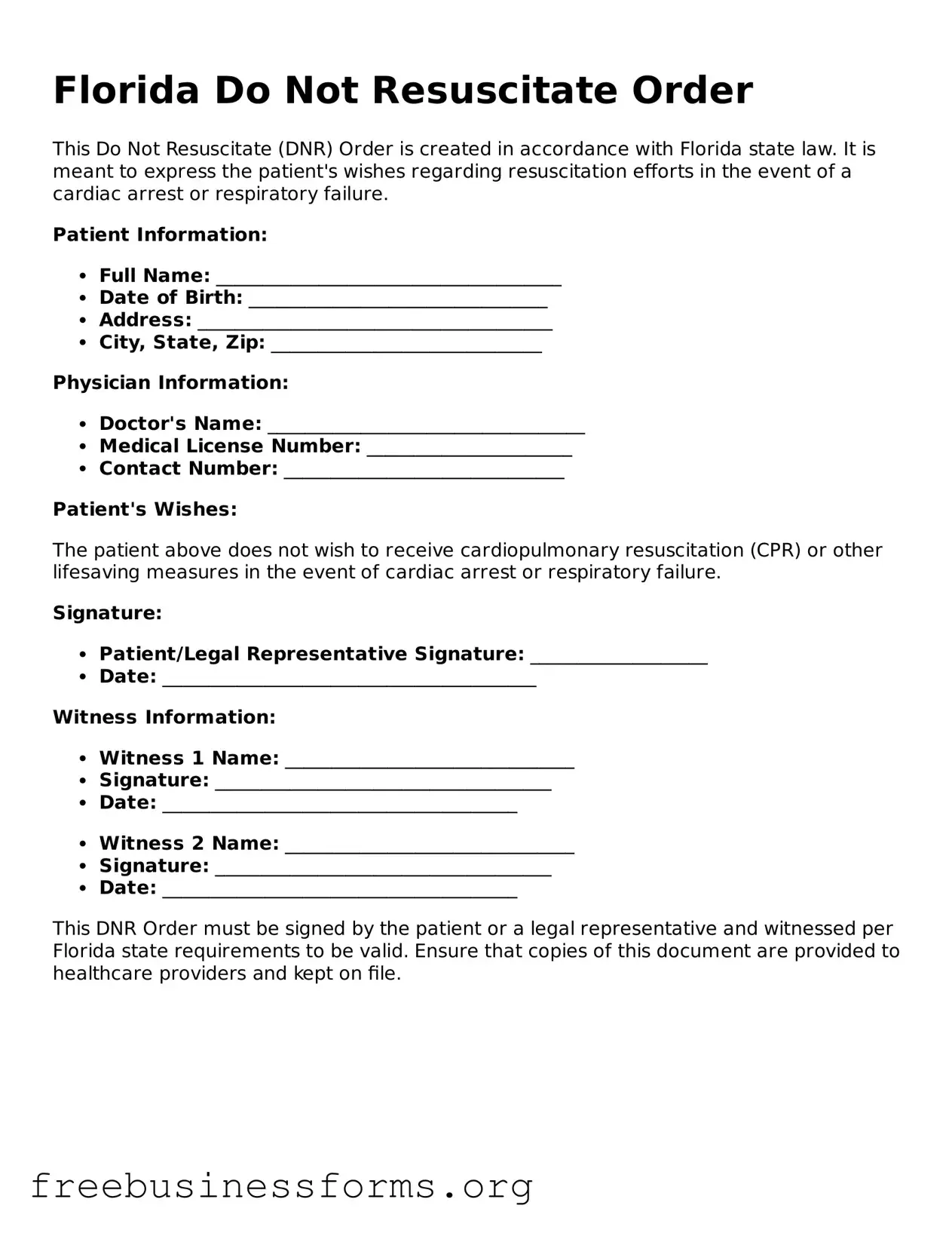Florida Do Not Resuscitate Order
This Do Not Resuscitate (DNR) Order is created in accordance with Florida state law. It is meant to express the patient's wishes regarding resuscitation efforts in the event of a cardiac arrest or respiratory failure.
Patient Information:
- Full Name: _____________________________________
- Date of Birth: ________________________________
- Address: ______________________________________
- City, State, Zip: _____________________________
Physician Information:
- Doctor's Name: __________________________________
- Medical License Number: ______________________
- Contact Number: ______________________________
Patient's Wishes:
The patient above does not wish to receive cardiopulmonary resuscitation (CPR) or other lifesaving measures in the event of cardiac arrest or respiratory failure.
Signature:
- Patient/Legal Representative Signature: ___________________
- Date: ________________________________________
Witness Information:
- Witness 1 Name: _______________________________
- Signature: ____________________________________
- Date: ______________________________________
- Witness 2 Name: _______________________________
- Signature: ____________________________________
- Date: ______________________________________
This DNR Order must be signed by the patient or a legal representative and witnessed per Florida state requirements to be valid. Ensure that copies of this document are provided to healthcare providers and kept on file.
